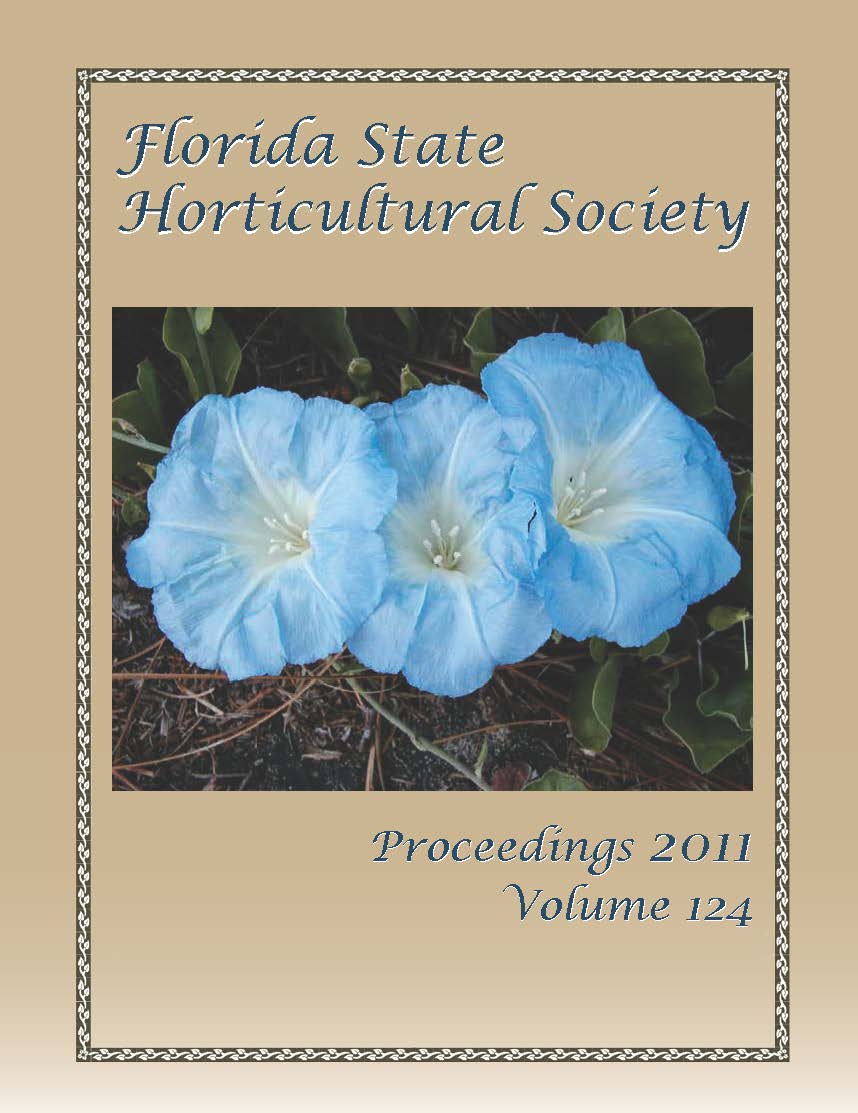Quantification of Furanocoumarins and Acids in Grapefruit Hybrid Populations to Evaluate Their Relation and Assist Selection
Abstract
Several clinical studies have shown that grapefruit furanocoumarins (FCs) can inhibit the intestinal cytochrome P450 CYP3A4. As a result, the levels of some oral drugs in blood have been shown to increase to various degrees. This drug interaction has had a significant effect on the sale of grapefruit and grapefruit juice. Grapefruit diploid and triploid hybrids were selected to quantify the concentration of different FCs and acid derivatives toward evaluation of their biosynthetic relation and selection of new seedless (triploid) grapefruit varieties with low FCs and low acids. Measured FCs included paradisin C, 6,7-dihydroxy bergamottin (6,7-DHB), bergamottin, bergaptol, isoimperatorin, 5,8-dimethylallyloxypsoralen (5,8-DMP), and epoxybergamottin (EBM). The concentrations of FCs varied greatly among those hybrids, ranging from 0 to several hundred micrograms per liter juice (mg·L–1). There were varied degrees of correlations among the concentrations of these FCs, and acids. This effort, along with the valuable data, will lead to breeding low-FC, low-acid, and possibly seedless grapefruit varieties for greater market appeal.

